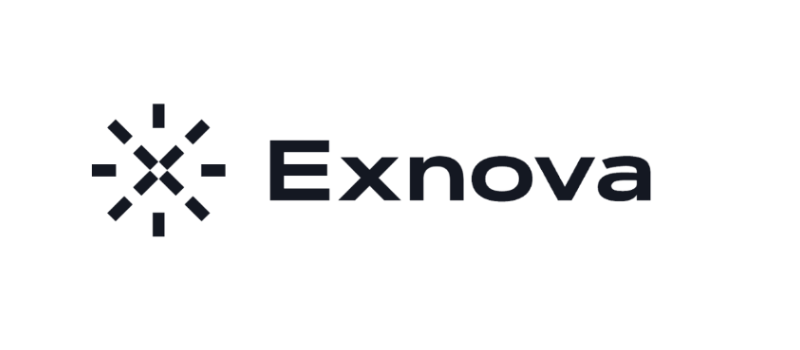E-mini futures trading is very popular due to its low costs, wide choice of markets and access to leverage. In this E-mini futures guide, we explain the definitions, history, and structure, before moving on to the benefits of trading E-mini futures versus stocks, forex and options. Along the way, the trader’s choice, trading hours and margin requirements will also be broken down.
What is E-Mini?
Although there are other E-mini contracts, E-mini is usually an abbreviation for E-Mini S & P 500, with the symbol ES. It is essentially a stock market index futures contract listed on the Chicago Mercantile Exchange (CME). The value of a single contract is 50 times that of the S&P’s stock index; P. So the contract size is reduced while still following the same index. Also worth noting, as will be broken down in detail below, there are a number of other E-mini contract options available, from Russell 2000 futures to S&g’s; P MidCap 400 and Dow Jones Futures.
Expires
The contract reinvests into the next operating contract. However, as the expiration calendar shows, expiration occurs every quarter, usually on the third Friday of March, June, September, and December. Having said that, it is the date of the re-contract that is of greater importance. Rollover takes place on the second Thursday of March, June, September and December. Though if the date is a Friday, the first Thursday will be the rollover instead. You can find upcoming details on the shelf life and option settlements S & P 500 by visiting the official CME website.
Electronic selection
Unsurprisingly, the S&P’s contract; The P 500 E-mini has been so successful that CME and other exchanges have introduced more than 40 other mini futures contracts, including:
- NASDAQ 100 (future symbol NQ)
- NASDAQ Composite (symbol QN)
- S & P Midcap 400 (EMD symbol)
- S & P Smallcap 600 (symbol SMC)
- Index (symbol YM)
- Russell 1000 (symbol RF2)
- Russell 2000 (symbol RF2)
- NASDAQ Biotechnology (symbol BQ)
Commodities – Gold, silver, copper, wheat, corn, soybeans, natural gas, heating oil and light sweet crude oil futures.
Forex – Long list of rates against the US Dollar, including Euro, British Pound, Japanese Yen, Swiss Franc, Canadian Dollar, Australian Dollar and Chinese Yuan.
Option – On S & P 500 Emini and NASDAQ 100 Emini.
Further afield you can also find Nikkei 225, Nifty 50 and FTSE 100 futures. However, despite a small number of options, the S&P 500 E-mini still accounts for the majority of trading volume. In fact, out of more than 40 other small contracts, only 10 have daily volume exceeding 1,000 contracts. Also note that price, volume, volatility, contract size and other specifications will vary between each product and market.

Who trades E-Minis?
If you decide to start trading E-mini index futures, who are you up against?
- 15 high-frequency trading companies account for about a third of the E-mini market.
- About 6,000 professional or position traders make up almost two-thirds of the market.
- About 6,000 amateurs trade about one contract per trade, per day, representing only 1% of total volume.
Why trade E-Minis?
There are several factors that make E-minis a great day trading vehicle, including:
- Global – You can trade a global equity index portfolio from a single market.
- Low Costs – Deep liquidity and tight bid spreads can help keep costs down. Furthermore, alternative equity index futures can help save money on margin.
- Leverage – Leverage can help you buy and sell a large contract with minimal capital. This means you have more options when opening a futures bar chart S & Real-time P500.
- Access – With almost 24 hours access, you can trade as events unfold. There are also plenty of news sources and other online resources available. This means that you can quickly identify gold futures or NASDAQ 100 symbols when a major event occurs and trade accordingly.
- Selection – The number of products and options has increased significantly. For example, you can now dive into the technology and utility of picking industry futures, on top of more standard E-mini contracts.
- Resources – Today’s brokers offer a wide range of additional resources, from advanced charting packages to in-depth user guides. All of which can help you decipher graphs, quotes, and values of Emini code, for example.
Risk
While there are obvious benefits, you should also be aware of the risks before checking out S&P; P 500 and crude oil mark values, including:
- Electronic Trading – Speed is not always good news in the electronic market, as E-mini can move quickly. These high levels of volatility can be dangerous, especially for new traders.
- Overtrading – With so many opportunities and electronic interfaces, it can be tempting to trade and cash in after big losses. This is especially true when there is access to a lot of NASDAQ 100 future historical data available, for example. This can mean that those without discipline run the risk of losing a lot of capital in a row.
Both the pros and cons of these futures have been explained. This will give you access to the E-minis S & E-minis future icon list; P500 with caution.
E-Mini Futures vs Stocks, Options & Forex
You have gold contracts, major currency pairs, copper futures, binary options and more. So how do you know which markets to focus your attention on? Watch:
- Stocks – There’s certainly no shortage of options with stocks. However, most of the time they completely follow the overall market. Also, just a single news event can cause the price to plummet. Claiming an advantage can also prove challenging, especially when everyone is looking at the same NASDAQ forecast on Yahoo Finance.
- Optional – While they are intended for simplicity, they are often not. You often need to get the direction, size and travel time right. Not to mention, there is a wide range of trading strategies to get your attention.
- Commodity – This is the home of professionals. You usually need to have a niche and stay up to date on all things dairy, for example. Also, with commodities, you usually don’t have enough volatility or too much.
- Forex – Although FX trading is very popular, volume data is incomplete. Until banks are ready to share all volume data in real time, you can always be a step behind trying to stick to the average transaction size and the experts.
Margin Requirements
Just as important as the price of the E-mini S & futures contract; Your P 500 is the margin requirement. Of course, these requirements will vary from broker to broker. However, there are three important price levels:
- Initial Intraday Range – This is the account balance you need to set in order of E-mini day. This could be anywhere from $1,000 all the way up to $2,750. Note that market volatility can also affect prices.
- Overnight Initial Margin – This is the account balance you need to execute trades overnight or during the after-hours session. Usually prices range from about $4,500 to $5,250.
- Minimum Account Opening – This is simply the amount you need to open a futures account. You may need anywhere from $5,000 to $10,000.
It’s also worth remembering that you shouldn’t consider what a 1 Emini contract is and the margin that comes with it. For example, volume traders will want to look at the trading platforms and additional resources on offer. Alternatively, you may want to consider a practice account or an online trading academy before you risk real capital. Both will help you develop effective trading strategies while building market confidence. Finally, you may want to consider margin rates in conjunction with other rules and regulations. For example, will low margin requirements lead you to trade more and then run into sample day trading regulations?
Trading hours
E-mini S & P 500 futures trading hours run from Sunday to Friday 17:00 to 16:00 CT. However, there is a 15 minute trading gap between 15:15 and 15:30 CT. In addition, daily maintenance takes place between 16:00 and 17:00 CT. Trading hours are divided into two sessions:
- Intraday trading sessions start at 08:30 and end at 15:15 CT.
- After-hours trading begins at 15:30 and runs until the next day’s trading session.
As future historical data of the E-mini S & The P 500 and the live chart demonstrate, the largest volume seen during the day session. Having said that, data released prior to session open date also trigger significant activity. On top of that, any major news event from Europe could lead to a spike in trading. Note NASDAQ E-minis and other small contracts also typically trade nearly 24 hours a day. Visit the official website for upcoming deals and holiday trading hours.
History
Early History
A small E-mini context can give meaning to trading systems in use today. These futures contracts were first launched by CME on September 9, 1997. This is the result of the S & P, which is valued at 500x the index (over $500,000) is simply too big for the smaller players. Not surprisingly, the E-mini quickly became the most traded equity index futures contract globally. In fact, the daily volume of the E-mini now exceeds $100 billion, much higher than the combined volume of the underlying 500 shares. Not only individual traders choose E-mini over S & P is larger. Hedge funds also want some action, as the latter relies on an often delayed open-air mining system. After seeing its immense success, the case was soon made to showcase another E-mini. So, the live charts soon started showing the E-mini NASDAQ-100 futures contract, which is one-fifth of the actual index. Furthermore, many mini products aimed at smaller traders and investors were introduced. As June 2005 took place, a new smaller tool was built on the S & P has been provided. However, this time the underlying asset is 100 shares of the SPDR ETF. But unfortunately, the legal requirements mean that the margin required for each contract is almost equal to the duration of the larger E-mini contract. As a result, the product never really took off with daily volume remaining below 10 contracts per day.
Recent Events
There are a few interesting recent events in E-mini’s timeline. First, there was the Flash 2010 sale. US government found a single trader responsible for selling 75,000 E-mini contracts. In fact, the company in question had inadvertently instructed its trading program to dump them all in a series of sell orders over 20 minutes, instead of spreading sell orders over a much longer period of time. . On December 7, 2016, another big event took place. Many buyers bought about 16,000 E-mini S & P 500. This is supposed to be a series of stop orders due to just one contract trade at 2225.00. The contracts are trading as a trailing stop, all trades have been trading at the same nanosecond scale and are said to be worth around $1.8 billion. A series of fresh trade highs was quickly followed by a fierce market rally for the rest of the day and two days after. In fact, it was without a doubt the biggest E-mini deal that year by a factor of two. Not surprisingly, then, analysts were quick to compare it to the Flash-crash sale six years earlier.
Final thoughts on E-Minis
E-minis are a great tool if you want exposure to large-cap companies on the US stock market. You benefit from liquidity, volatility and relatively low costs. You also have access to a variety of markets and products, from NASDAQ biotech and EUR/USD futures to weekly options and Dax futures.








